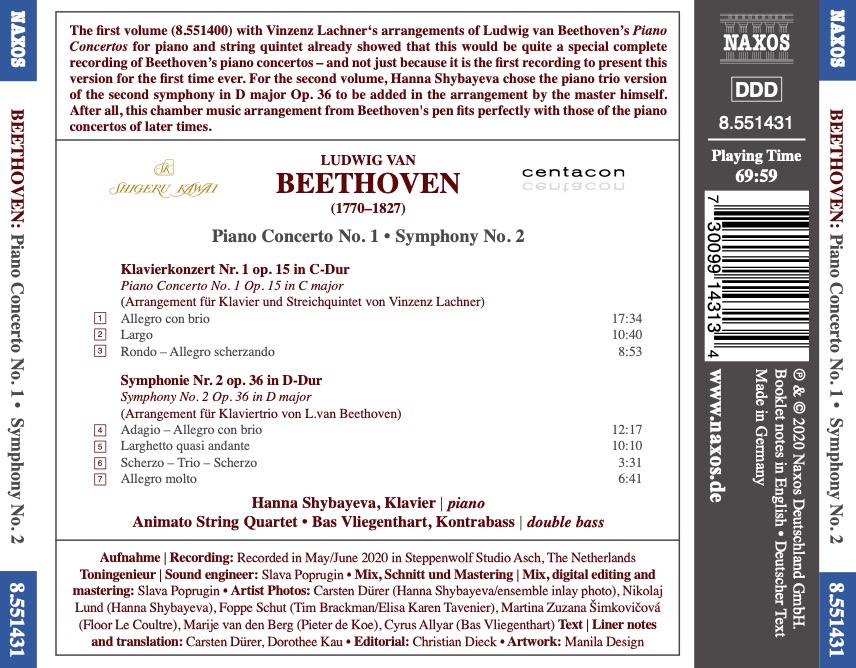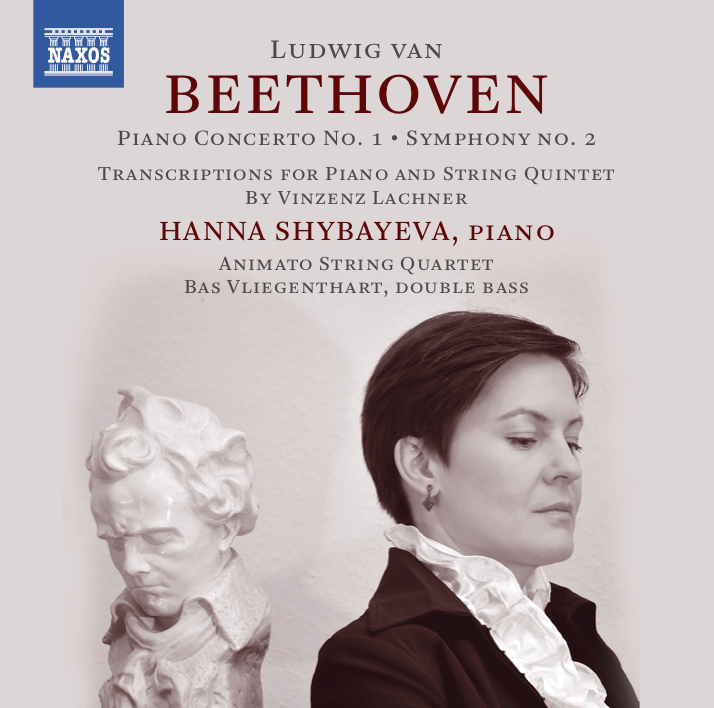L.VAN BEETHOVEN/V.LACHNER: PIANO CONCERTO No.1/SYMPHONY No.2 (arr. piano/string quintet/piano trio)
Animato String Quartet
Bas Vliegenthart, double bass
Label: NAXOS Music Group
Catalogue no.: 8.551431
Release date: November 2020
Barcode EAN: 730099143134

The first volume with Vinzenz Lachner‘s arrangements of Ludwig van Beethoven’s Piano Concertos for piano and string sextet already showed that this would be quite a special complete recording of Beethoven’s piano concertos – and not just because it is the first recording to present this version for the first time ever.
Those who bought the first CD with Piano Concertos Nos. 3 and 4 in this arrangement might be surprised that the second volume does not present Vinzenz Lachner’s arrangements of the other piano concertos. The reason is that Hanna Shybayeva knows only too well that the remaining three piano concertos are not enough material for two further CDs. Therefore, the second volume includes Beethoven’s First Piano Concerto and the master’s own version of the Second Symphony in D major op.36 for piano trio, a chamber music arrangement by Beethoven himself that perfectly fits in with the later arrangements of his piano concertos.
Symphony No.2 for piano trio
The Second Symphony from 1801/02 was composed at a time when Beethoven was already badly suffering from his progressing deafness as the “Heiligenstadt Testament” from 1802 makes obvious. This symphony was definitely a quantum leap compared to the first piece of this genre which was still strongly influenced by Haydn and Mozart. Accordingly, this work already contains the wealth of facets that characterises Beethoven’s distinctive features of later years and the reason why it did not attract universal praise on the part of contemporary critics. Three years later Beethoven wrote the version for piano trio: on the one hand because his original symphony was not performed everywhere and, on the other hand, because it was an opportunity to get money from a publisher, who would realise that this version could find customers in bourgeois households.
The difficulty for the three musicians taking on the task of playing this dense arrangement of the symphony lies especially in working out all these parts that are now distributed among just a few instruments. In this arrangement the piano does not necessarily take over the part of the wind players whereas violin and cello content themselves with the original parts of the string players. No, the violin sometimes has to take over the theme of the horn – Beethoven organised the distributions quite skilfully.
Managing to bring out the symphony’s verve and wealth of expressions in this constellation is definitely quite a challenge.
text: Carsten Dürer
English translation: Dorothee Kau


